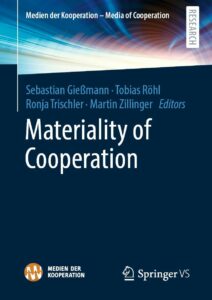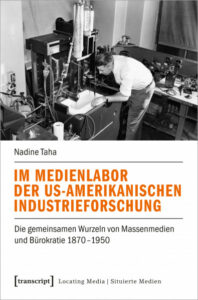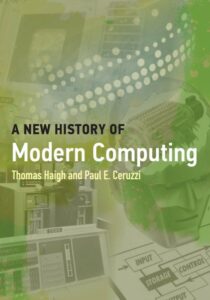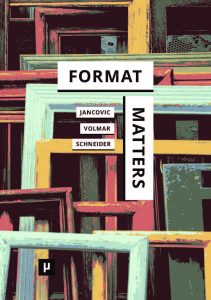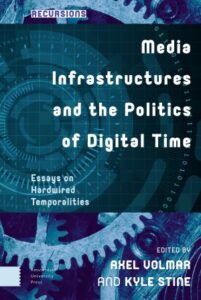A01 - Geschichte digital-vernetzter Medien zwischen Spezialisierung und Universalisierung (2020-2023)
Forschungsfokus der 2. Phase (2020 – 2023)
Teilprojektleiter*innen:
Mitarbeiter*innen:
Mercator-Fellow:
Das Teilprojekt rekonstruiert auf Basis historischer Fallstudien die medien- und datenpraktische ko-operative Verfertigung vernetzter Medien seit 1989. In medienhistorischer Hinsicht leistet das TP dabei einen Beitrag zur europäischen und transatlantischen Verflechtungsgeschichte des Internets und World Wide Webs. In medientheoretischer Hinsicht erarbeitet und präzisiert es eine Konzeption von Digitalität, die deren kooperative Entstehung, infrastrukturelle Aufrechterhaltung und Universalisierung sowie spezifische Öffentlichkeiten berücksichtigt.
Es untersucht fokussiert dazu insbesondere die konstitutive Rolle der a) Austauschbarkeit von Repräsentationen und das Wachstum digitaler Systeme, b) kooperativen Verfertigung von Interoperabilität und Modularität sowie c) elementaren Praktiken des Lesens, Schreibens und algorithmischen Kontrollierens. Die drei Arbeitspakete des Projekts erforschen dabei 1. die Konstitution des World Wide Webs als situierter Arbeitssituation (Gießmann, Seitz, Rommel), 2. die Entwicklung von Intranets am Beispiel deutscher Unternehmensnetzwerke (Taha) und 3. die Entstehung und Verbreitung von IP-basierter Echtzeit-Kommunikation in Form von Instant Messaging (Volmar).
Ausgangspunkt ist die Annahme, dass mit der Etablierung des Internets und speziell des World Wide Webs als öffentlicher general purpose-Infrastruktur zugleich die kooperativen Praktiken lokaler Arbeitszusammenhänge remediatisiert werden. Das TP rekonstruiert die Entstehung und Proliferation von Webanwendungen daher bewusst als software- und datenorientierte Infrastrukturgeschichte digitaler Kooperationsmedien. Im Vordergrund steht dabei die wechselseitige Verfertigung von Kooperationsbedingungen aus kollektiven, lokal begrenzten wie translokal verteilten Arbeitszusammenhängen auf Grundlage von situierten Datenpraktiken und -arrangements (wie z.B. Formatnutzung, Nutzerverwaltung, Filesharing, kollaborative Bearbeitung von Dateien, Programmierung, Fehlerbehebung, Patentierung, Standardisierung etc.).
Erkenntnisleitend ist die Frage nach den Wechselwirkungen zwischen spezifischen Arbeitspraktiken und den aus diesen resultierenden Kooperationsanforderungen sowie den Materialisierungen und Affordanzen digitaler Mikropraktiken, durch die Kooperationsbedingungen schließlich in Form digital vernetzter Anwendungen realisiert werden. Diese Dynamik wird vor dem Hintergrund einer longue durée kooperativer, bürokratischer und administrativer Abläufe verfolgt, die, so unsere Annahme, als soziotechnische Bedingungen die Materialität kooperativen Rechnens, Vernetzens und Datenverarbeitens bestimmen.

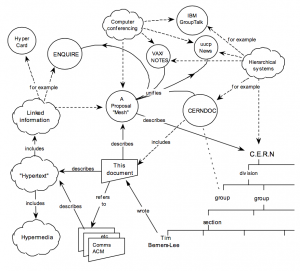



Publikationen
Aktuell
ZfM 29 „Test“
Das vorliegende Heft fragt, wie sich Medien und Tests wechselseitig konstituieren. Besondere Aufmerksamkeit erfahren dabei Politiken des Testens. Wir schlagen vor, Tests als offene Situationen zu verstehen, in denen mit teils etablierten, teils sich erst während des Testens etablierenden Maßstäben soziotechnische Bewertungen erfolgen und Entscheidungen getroffen werden. Für einen medienkulturwissenschaftlichen Begriff des Tests gilt: In den Mikroentscheidungen des verteilten und verteilenden Testens steht das Soziale selbst auf der Probe. Die in diesem Heft versammelten Beiträge verdeutlichen: Kein Test ohne Medien – kein Medium ohne Test.
Gießmann, Sebastian; Gerlitz, Carolin (2023) “Test: Einleitung in den Schwerpunkt”. In: Zeitschrift für Medienwissenschaft. Jg. 15, Heft 29 (2/2023): 10–19. DOI: https://doi.org/10.25969/mediarep/20051
Materiality of Cooperation
The volume investigates the socio-material dimension and media practices of cooperation – before, during and beyond situations. Cooperation is understood as reciprocal interplay operating with or without consensus, in co-presence or absence of the involved actors in distributed situations. Artefacts, bodies, texts and infrastructures are the media that make cooperation possible. They enable and configure reciprocal accomplishments – and are themselves created through media practices in cooperative situations.
Sebastian Gießmann, Tobias Röhl, Ronja Trischler, Martin Zillinger, Hrsg. 2023 (im Erscheinen). Materiality of Cooperation. Cambridge, MA: The MIT Press.
#rp23 Keynote: Bar oder mit Karte.
Warum wir neue Infrastrukturen des Geldes brauchen
Dr. Sebastian Gießmann
06.06.2023
Bar oder mit Karte? Oder doch per App oder Krypto-Wallet bezahlen? Wenn es um's Geld geht, fehlt in Deutschland soziale Fantasie, Innovations- oder gar Risikobereitschaft. Diesen Zustand nehme ich nicht länger hin und frage: Welchen digitalen Euro braucht unsere Zivilgesellschaft?
Im Medienlabor der US-amerikanischen Industrieforschung.
Die gemeinsamen Wurzeln von Massenmedien und Bürokratie 1870-1950
Telegrafie, Fotografie, Telefon und Radio sind ihre bürokratischen Konstitutionen nicht mehr anzusehen. Daher geraten die grundlegenden Bedingungen in Vergessenheit, die sie mit anderen Waren und Gütern der industriellen Moderne gemein hatten. Nadine Taha blickt auf den Aufstieg der nordamerikanischen Industrieforschung zwischen 1870 und 1950. Anhand von Fallstudien rekonstruiert sie die gemeinsamen Wurzeln von Massenmedien und Bürokratie. Dabei macht sie die Wirkmächtigkeit von Patenten, Labornotizbüchern, Spezifikationen und laboratorischen Reportsystemen sichtbar, die unzertrennlicher Teil der Erfindungsgeschichte technischer Medien sind.
Taha, Nadine. 2022. Die Medien der Industrieforschung. Die gemeinsamen Wurzeln von Massenmedien und Bürokratie 1870-1950. Bielefeld: transcript Verlag.
A New History of Modern Computing
How the computer became universal.
Over the past fifty years, the computer has been transformed from a hulking scientific supertool and data processing workhorse, remote from the experiences of ordinary people, to a diverse family of devices that billions rely on to play games, shop, stream music and movies, communicate, and count their steps. In A New History of Modern Computing, Thomas Haigh and Paul Ceruzzi trace these changes. A comprehensive reimagining of Ceruzzi's A History of Modern Computing, this new volume uses each chapter to recount one such transformation, describing how a particular community of users and producers remade the computer into something new.
Haigh and Ceruzzi ground their accounts of these computing revolutions in the longer and deeper history of computing technology. They begin with the story of the 1945 ENIAC computer, which introduced the vocabulary of “programs” and “programming,” and proceed through email, pocket calculators, personal computers, the World Wide Web, videogames, smart phones, and our current world of computers everywhere—in phones, cars, appliances, watches, and more. Finally, they consider the Tesla Model S as an object that simultaneously embodies many strands of computing.
Haigh, Tom; Ceruzzi, Paul. E. 2022. A new history of modern computing. Cambridge, Massachusetts: The MIT Press (History of computing).
Format Matters. Standards, Practices and Politics in Media Cultures
From TIFF files to TED talks, from book sizes to blues stations—the term “format” circulates in a staggering array of contexts and applies to entirely dissimilar objects and practices. How can such a pliable notion meaningfully function as an instrument of classification in so many industries and scientific communities? Comprising a wide range of case studies on the standards, practices, and politics of formats from scholars of photography, film, radio, television, and the Internet, Format Matters charts the many ways in which formats shape and are shaped by past and present media cultures. This volume represents the first sustained collaborative effort to advance the emerging field of format studies.
Marek, Jancovic, Axel Volmar und Alexandra Schneider, Hrsg. 2019. Format Matters. Standards, Practices and Politics in Media Cultures. Lüneburg: meson press.
Media is a kind of gatekeeper, connecting disparate entities and shielding them from one another at the same time. When we speak of media, we often refer to those entities themselves—to persons, organizations, artifacts, signals, and inscriptions—referencing directors, artists, newspapers, films, iPhones, paper, ink, notes, beats, color, and soundwaves. But as the middle or between, the essence of media itself seems to be distributed across the mix of entities involved, and its location and agency are hard to pin down.
This new anthology takes stock of our empirical and historical understanding of the two-sided nature of media and tracks the recent turn in media studies to examining practice itself. A unique discussion of the intersection of media theory and practice theory, Connect and Divide explores how distributions of knowledge, labor, and power may be hidden in what remains untraceable about media, shedding vital light on the social implications of media theory today.
Schüttpelz, Erhard; Bergermann, Ulrike; Dommann, Monika; Stolow, Jeremy und Taha, Nadine. Hrsg. 2021. Connect and divide: The practice turn in media studies. Zürich, Switzerland: Diaphanes.
Media Infrastructures and the Politics of Digital Time: Essays on Hardwired Temporalities.
In a crucial sense, all machines are time machines. The essays in Media Infrastructures and the Politics of Digital Time develop the central concept of hardwired temporalities to consider how technical networks hardwire and rewire patterns of time. Digital media introduce new temporal patterns in their features of instant communication, synchronous collaboration, intricate time management, and continually improved speed. They construct temporal infrastructures that affect the rhythms of lived experience and shape social relations and practices of cooperation. Interdisciplinary in method and international in scope, the volume draws together insights from media and communication studies, cultural studies, and science and technology studies while staging an important encounter between two distinct approaches to the temporal patterning of media infrastructures, a North American strain emphasizing the social and cultural experiences of lived time and a European tradition, prominent especially in Germany, focusing on technological time and time-critical processes.
Volmar, Axel and Stine, Kyle. Eds. 2021. Media Infrastructures and the Politics of Digital Time: Essays on Hardwired Temporalities. NL Amsterdam: Amsterdam University Press.
Das Soziale ist immer schon medial und das Mediale immer schon sozial. „Materialität der Kooperation“ fragt nach materiellen Bedingungen und Medienpraktiken der Kooperation. Kooperation wird dabei als wechselseitiges Zusammenwirken verstanden, das mit oder ohne Konsens, mit oder ohne Kopräsenz der beteiligten Akteure von statten gehen kann.
Gießmann, Sebastian, Tobias Röhl und Ronja Trischler, Hrsg. 2019. Materialität der Kooperation. Wiesbaden: Springer VS.
Computing is Work!
We humans spend most of our waking lives working. Our work includes cultural, intellectual, managerial and emotional labour as well as physical toil. And yet, most research carried out by humanities and media scholars implicitly treats the study of work as marginal, uninteresting or as a “mere” sociological topic. Even the study of “digital practices” rarely engages with the specifics of the workplace, despite the importance of distributed micro-practices such as clickworking, filesharing and collaborative editing. Information technology continues to underpin this transformation of work today, as it has in the past. For this reason, the video contributions to the interdisciplinary conference “Computing is Work!” (Siegen, Germany, 6–8 July 2017) focus on computing as work practice, both on a local or situated and an infrastructural level.
An der Schnittstelle von Science and Technology Studies und Medienwissenschaften werden Susan Leigh Stars (1954-2010) Arbeiten zu Grenzobjekten, Marginalität, Arbeit, Infrastrukturen und Praxisgemeinschaften interdisziplinär kommentiert und auf ihre medienwissenschaftliche Produktivität hin befragt. Die wegweisenden historischen und ethnografischen Texte der US-amerikanischen Soziologin liegen mit diesem Band erstmals gesammelt auf Deutsch und in Open Access vor.
Star, Susan Leigh. 2017. Grenzobjekte und Medienforschung. Hrsg. von Sebastian Gießmann und Nadine Taha. Bd. 10. Locating Media|Situierte Medien. Bielefeld: transcript.

